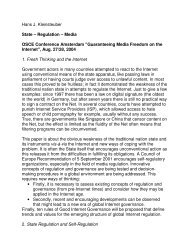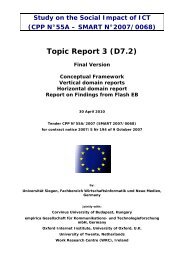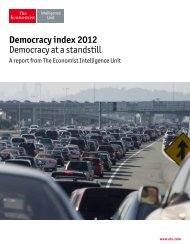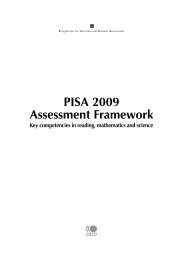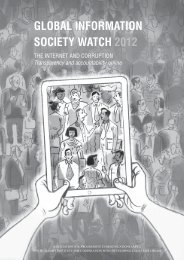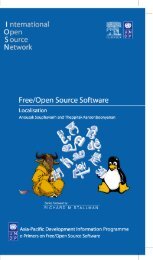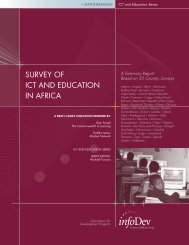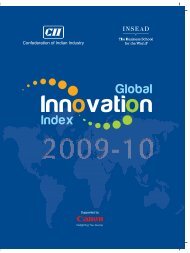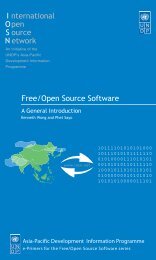Digital Activism Survey Report 2009
Digital Activism Survey Report 2009
Digital Activism Survey Report 2009
Create successful ePaper yourself
Turn your PDF publications into a flip-book with our unique Google optimized e-Paper software.
characterized by a special political apathy – the digital natives may develop new and special ways of digital<br />
activism when they have reached the key force age.” We look forward to seeing future research on this<br />
topic that will demonstrate through more rigorous sampling the effect of digital technology on propensity<br />
for activism.<br />
Gender Imbalances Hinge on Geography<br />
Of the 121 respondents who gave their gender on the survey, 48 identify as female while 73 identify as<br />
male, a 2:3 gender split in favor of men. Yet this global figure masks extreme regional variation. Of North<br />
American respondents from the US and Canada, 28 are female and 27 are male - a near 1:1 split. In this<br />
case, parity in digital activism mirrors parity in Internet access: according to Pew's 2005 "How Women and<br />
Men Use the Internet" report, the US has near parity in Internet use between men and women.<br />
Figure 2: The Gender Gaps<br />
All Respondents North America Outside North America<br />
(40% - 60%) (50% - 50%) (30% - 70%)<br />
Outside of North America, the global gender balance was more skewed, with the divide breaking down to<br />
20 female and 45 male, a 3:7 split in favor of men. Thus the parity in North America actually masks a<br />
more drastic global imbalance. Does this gender imbalance in digital activism match Internet access rates<br />
for men and women, as was the case in North America The sample is too small to say, unfortunately.<br />
One important note is that the balance in Internet access does not appear to universally mirror Internet<br />
8



